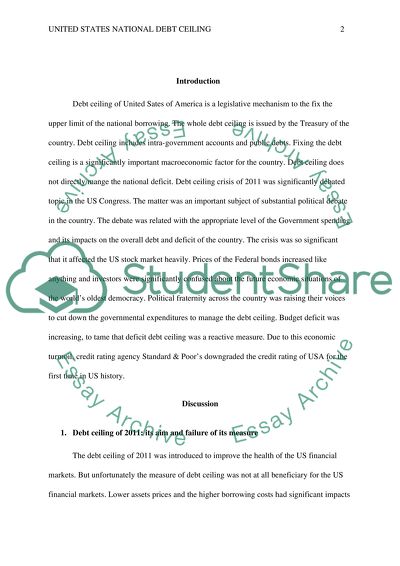Cite this document
(United States National Debt Ceiling Assignment Example | Topics and Well Written Essays - 2146 words, n.d.)
United States National Debt Ceiling Assignment Example | Topics and Well Written Essays - 2146 words. Retrieved from https://studentshare.org/finance-accounting/1658436-united-states-national-debt-ceiling
United States National Debt Ceiling Assignment Example | Topics and Well Written Essays - 2146 words. Retrieved from https://studentshare.org/finance-accounting/1658436-united-states-national-debt-ceiling
(United States National Debt Ceiling Assignment Example | Topics and Well Written Essays - 2146 Words)
United States National Debt Ceiling Assignment Example | Topics and Well Written Essays - 2146 Words. https://studentshare.org/finance-accounting/1658436-united-states-national-debt-ceiling.
United States National Debt Ceiling Assignment Example | Topics and Well Written Essays - 2146 Words. https://studentshare.org/finance-accounting/1658436-united-states-national-debt-ceiling.
“United States National Debt Ceiling Assignment Example | Topics and Well Written Essays - 2146 Words”, n.d. https://studentshare.org/finance-accounting/1658436-united-states-national-debt-ceiling.


